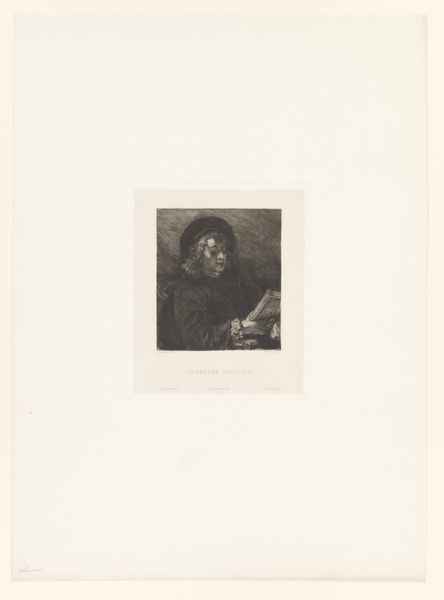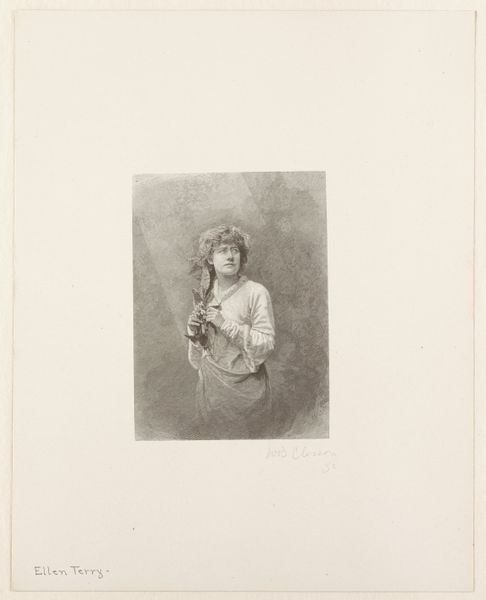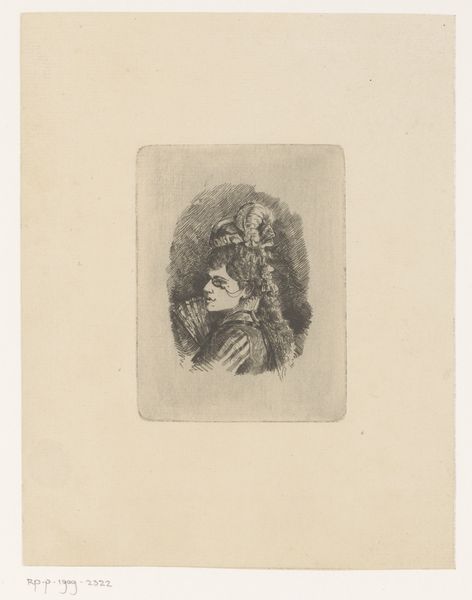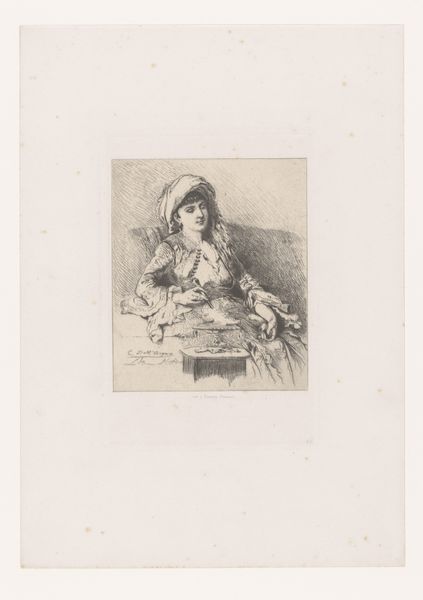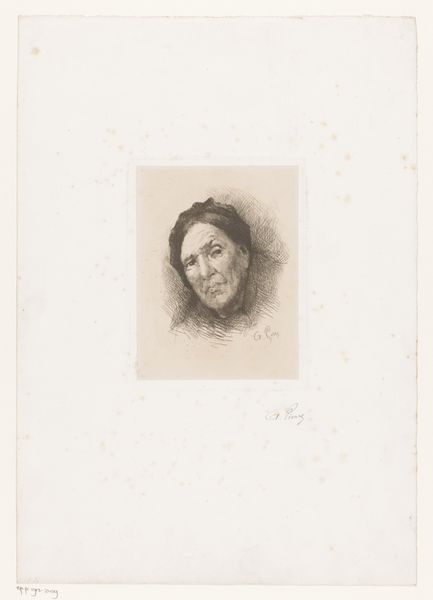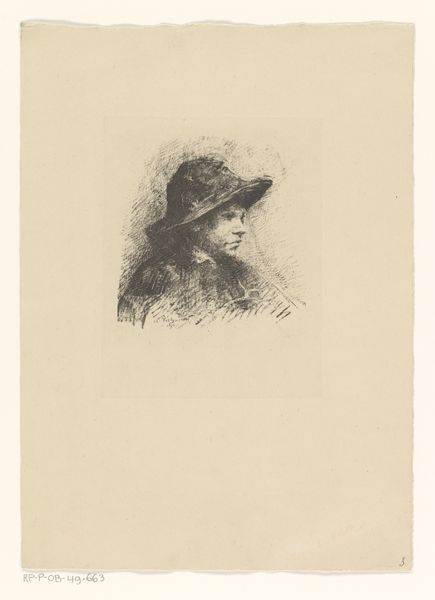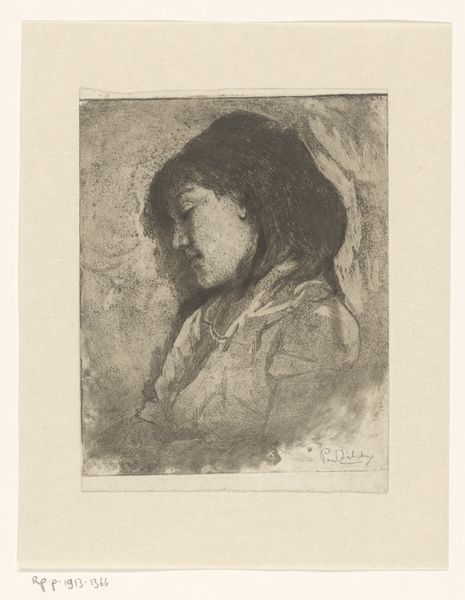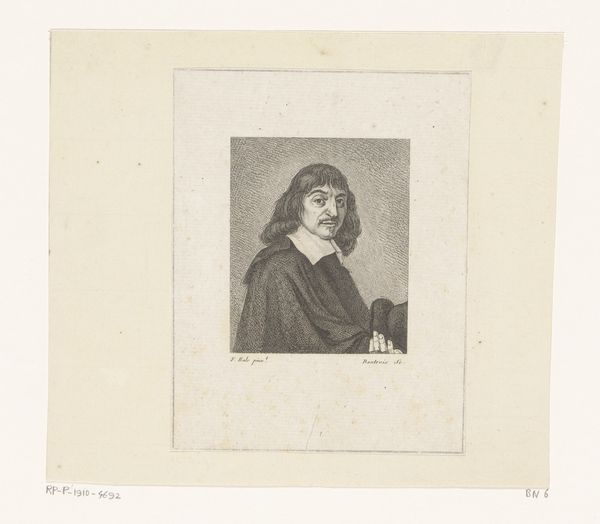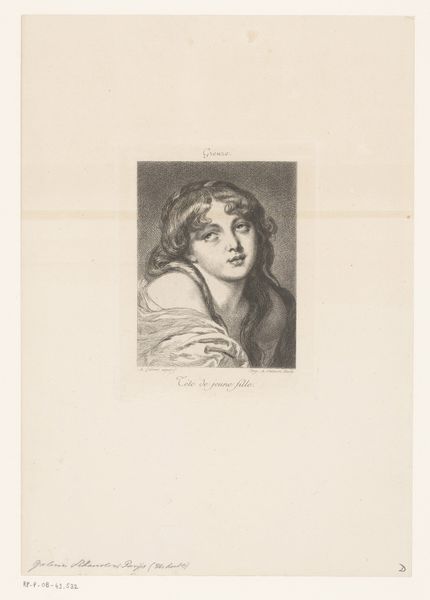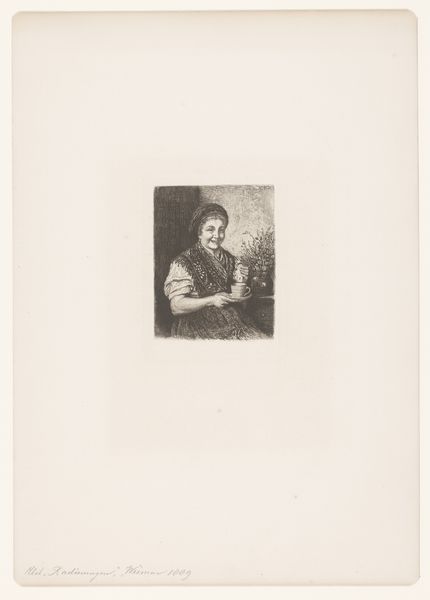
Dimensions: height 240 mm, width 180 mm
Copyright: Rijks Museum: Open Domain
This is an etching, made by William Unger, showing a young man with a lute. Unger was a master of the etching, a printmaking technique that demands careful preparation. A metal plate, likely copper, is coated with a waxy ground, then the artist scratches through the ground with a needle to expose the metal. When the plate is immersed in acid, the exposed lines are etched into the surface. The depth of the lines determines how much ink they will hold, and thus how dark they appear in the final print. Unger's skill is evident in the way he captures light and shadow, creating a rich, tonal range. Note the textures, from the fabric of the young man's clothing to the smooth surface of the lute. This level of detail speaks to the labor-intensive nature of the etching process. Each line is carefully considered, each area of shading built up through a network of tiny marks. It's easy to overlook the amount of work involved in printmaking, but understanding the process is key to appreciating the artistry of the final result. This etching isn't just a picture; it's a testament to Unger's mastery of a complex craft.
Comments
No comments
Be the first to comment and join the conversation on the ultimate creative platform.
